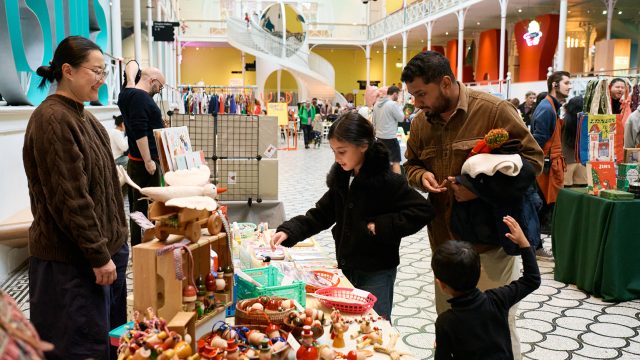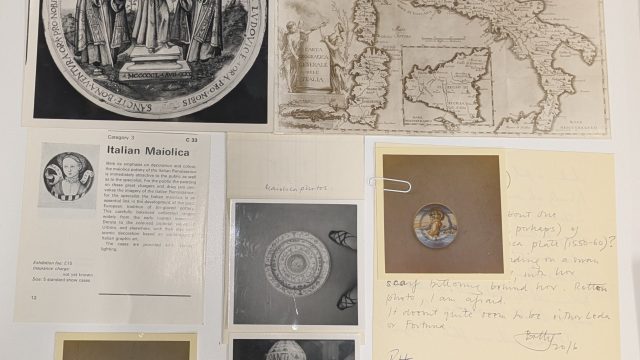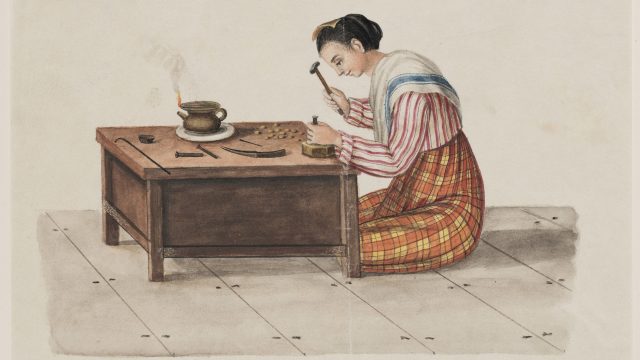Metalworking Now is a new display in Room 66: the Whiteley Silver Galleries, celebrating the dynamism of modern metalworking and showcasing some recent acquisitions made for our contemporary metalwork collection. The museum has been actively acquiring contemporary metalwork for years and we were fortunate to have a large and incredibly varied collection of objects to chose from. We couldn’t show everything, but the 17 objects we selected together give an insight into the great variety and vibrancy of work being produced by modern metalsmiths today.
The works represented in this new display were produced across the world and were made from metals including brass, pewter, silver, gold and copper, used singularly or in combination with other metals or materials such as cork, resin and wood. All the makers use traditional metalworking techniques as their starting point and imbue these with their own personality and line of enquiry, often pushing the material to its limits, or combining traditional techniques with modern technologies such as CAD (computer aided design) or 3D printing. Many of these objects have not been out on display since they were acquired, so we are excited for visitors to have the opportunity to see these objects up close.
A previous blog post by my colleague Clementine Loustric describes how we went about selecting objects for the display and introduces two of the objects: Whirl Boat Vessel by Io Kо̄ichi and Wood-Grain Metal Flower Vase by Ryūhei Sako. This post showcases a few more of the objects in the display, which I hope will encourage you to visit and find out more about the dynamic field of metal craft today.
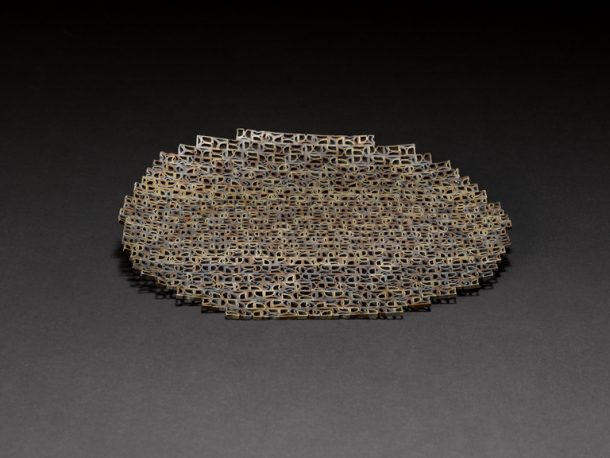
Shallow Dish by Patrick Davison was acquired earlier this year. Patrick’s unique practice uses mixed metals in combination to explore the physical properties of different metals. Shallow Dish was made by soldering metal tubes together and compressing them into a square rod. The rod was then sliced thinly to form individual tiles which he then carefully arranged and soldered together to create the final piece. The lace-like patterns on the tiles reveal how the metals collapse and press against each other at different rates.
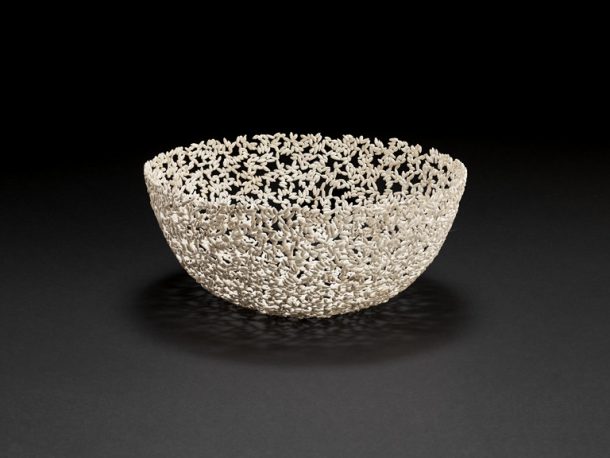
Contemporary metalwork sits across the different collecting departments at the museum, and we have enjoyed researching a wide range of objects while developing this display, to present a global perspective on metal craft today. Wang Kezhen’s work explores the concept of vessels, and in the Rice Vessel series he draws on the rice-eating tradition in Chinese cooking, and the rich history and variety of serving vessels used in Chinese cuisine over time. To make the vessel, Kezhen made a mould which copied the shape of a historic ceramic rice bowl. He then made each silver rice grain painstakingly by hand and soldered the grains together, using the mould of the bowl to guide the shape of the vessel.

Peter Bauhuis has developed an unusual approach to metal-casting in order to create his distinctive vessels. Typically when casting an object, metal is carefully melted and mixed before being poured into a mould. Bauhuis prefers to pour multiple molten metals into the same mould, allowing the metals to merge and oxidise as they cool and harden at different rates. The dynamism of the process is frozen at the moment the metals solidify, creating remarkable patterns across a vessel’s surface.
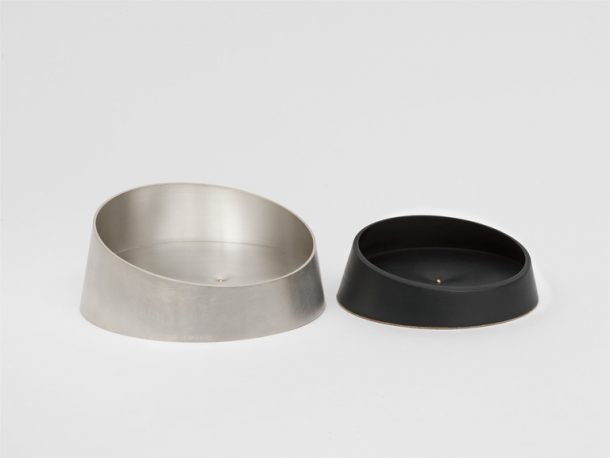
Sheng Zhang’s work is inspired by contemporary architecture and geometric forms, and his Off Vertical series explores the functionality of vessels. The designs were created using 3D modelling software. For the silver piece, the digital model was used to design the shape of the silver sheets which were then worked by hand. The same model generated the 3D-printed silicone moulds for casting the black jesmonite piece at a smaller scale.
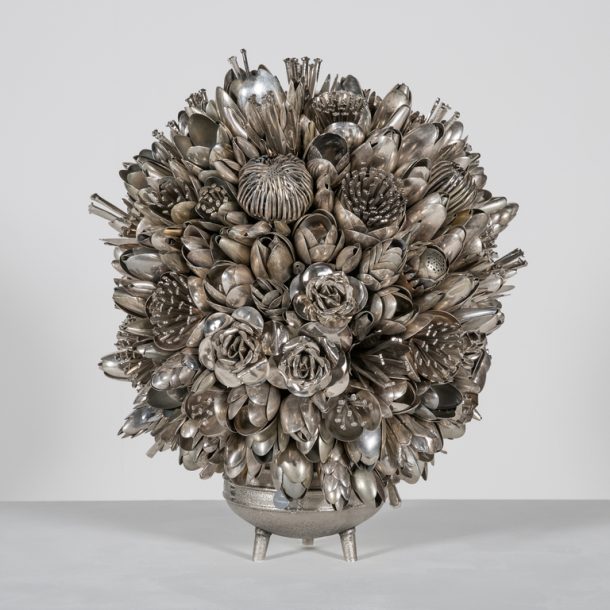
M.18-2016. Given by Ann Carrington.
Devil’s Trumpet is a monumental bouquet of flowers that was inspired by ‘memento mori’ in the 17th-century genre of Dutch still-life paintings. Memento mori reminded viewers of the temporary nature of life, and often took the form of wilting flowers or precious objects left behind after death. In this bouquet, however, the flowers are in full bloom. Look closely and you will see how new life is breathed into old metals: the bouquet has been assembled with extraordinary skill from hundreds of old pieces of cutlery and weighs a hefty 49kg!
This free display is on now until 31 December 2024 – find out more.
